JCIS: N/S co-doped V-based MXenes for high-performance lithium storage
QQ Academic Group: 1092348845
Detailed
The school season is approaching, Beiconami MXene and other materials are 10% off, and there are a lot of discounts, come and buy!
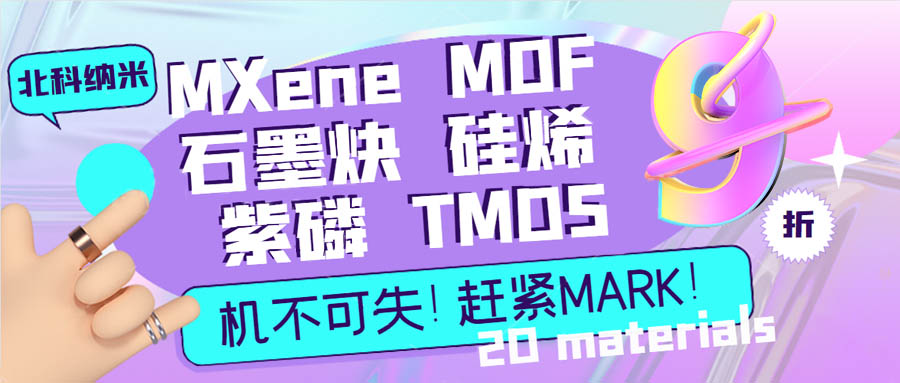
As an emerging class of 2D materials, MXenes have received extensive attention since their discovery in 2011. Benefiting from its metallic conductivity, mechanical stability, and electrochemical activity, MXene-based electrode materials have broad application prospects in the field of energy storage. Up to now, V2CTxMXene, as a representative of the widely studied MXene material system, has attracted the interest of many researchers due to its high theoretical lithium storage capacity (~940 mAh g-1). However, the experimentally obtained capacity of V2CTx MXene still has a large gap compared with its theoretical capacity, which is due to its layer stacking and stacking, resulting in poor ion transport between electrode and electrolyte. Therefore, research on V2CTx MXenes for high-performance lithium storage is crucial.
Introduction
Recently, the team of Professor Pan Likun from East China Normal University published a research paper titled: Nitrogen and sulfur co-doped vanadium carbide MXene for highly reversible lithium-ion storage in the internationally renowned academic journal Journal of Colloid and Interface Science, reporting a N, The S co-doped V2CTx MXene exhibits excellent lithium storage performance, yielding a reversible capacity of 590 mAh g-1 after 100 cycles at a current density of 0.1 A g-1.
Graphical guide

Figure 1. Schematic diagram of the synthesis of N,S co-doped V2CTxMXene.
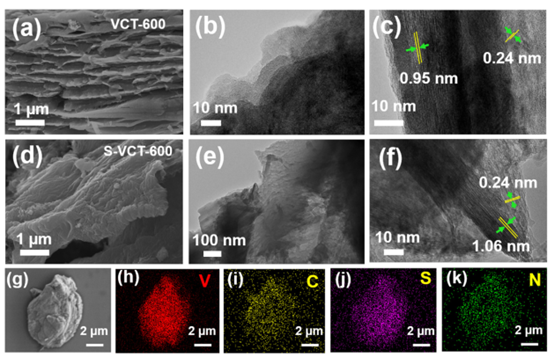
Figure 2. SEM characterization of N,S co-doped V2CTxMXene.

Figure 3. Physical composition characterization of N, S co-doped V2CTx MXenes.
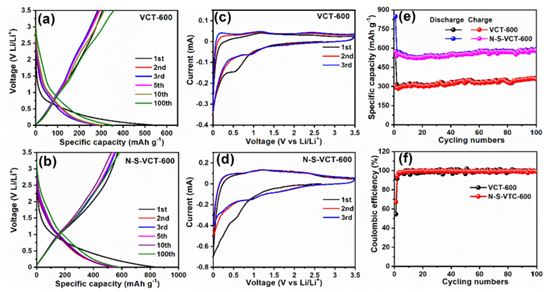
Figure 4. Electrochemical performance testing of N, S co-doped V2CTx MXenes.
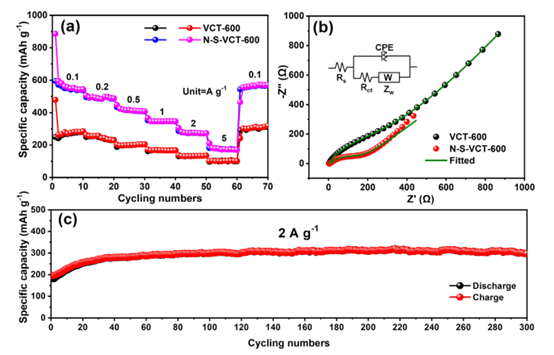
Figure 5. Electrochemical performance testing of N, S co-doped V2CTx MXenes.

Figure 6. Kinetic analysis of N,S co-doped V2CTx MXenes.
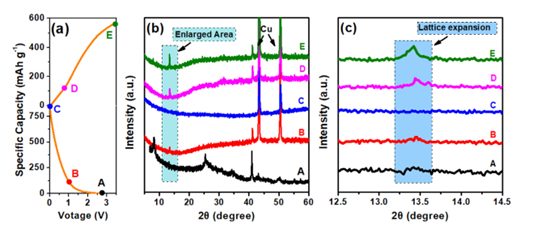
Figure 7. Energy storage mechanism analysis of N, S co-doped V2CTx MXenes
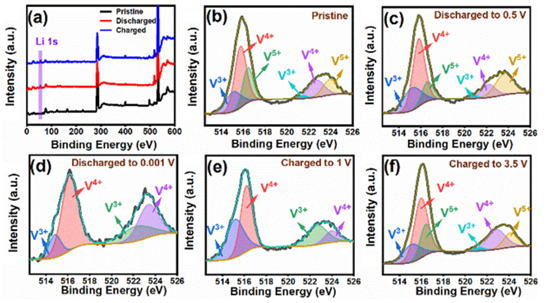
Figure 8. Ex-situ XPS spectra of N, S co-doped V2CTx MXene at different charge and discharge states.
Article summary
The N,S co-doped V2CTx MXenes prepared here are achieved by direct one-step calcination with thiourea. Compared with other V2CTx MXene lithium battery anode materials, it has higher reversible capacity, better rate performance and better long-term cycling stability. The improved performance can be mainly attributed to the synergistic effect brought about by the co-doping of N and S, which enhances the electrochemical reactivity and charge transport ability, which in turn enhances the rapid diffusion of ions and electrons. In addition, the N,S co-doping enlarges the interlayer spacing, which can accommodate more Li ions and promote the kinetic properties of ion transport during Li insertion/delithiation.
Literature link:

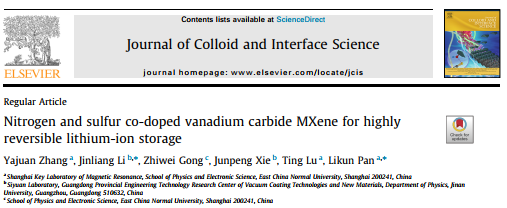
Research Background
As an emerging class of 2D materials, MXenes have received extensive attention since their discovery in 2011. Benefiting from its metallic conductivity, mechanical stability, and electrochemical activity, MXene-based electrode materials have broad application prospects in the field of energy storage. Up to now, V2CTxMXene, as a representative of the widely studied MXene material system, has attracted the interest of many researchers due to its high theoretical lithium storage capacity (~940 mAh g-1). However, the experimentally obtained capacity of V2CTx MXene still has a large gap compared with its theoretical capacity, which is due to its layer stacking and stacking, resulting in poor ion transport between electrode and electrolyte. Therefore, research on V2CTx MXenes for high-performance lithium storage is crucial.
Introduction
Recently, the team of Professor Pan Likun from East China Normal University published a research paper titled: Nitrogen and sulfur co-doped vanadium carbide MXene for highly reversible lithium-ion storage in the internationally renowned academic journal Journal of Colloid and Interface Science, reporting a N, The S co-doped V2CTx MXene exhibits excellent lithium storage performance, yielding a reversible capacity of 590 mAh g-1 after 100 cycles at a current density of 0.1 A g-1.
Graphical guide

Figure 1. Schematic diagram of the synthesis of N,S co-doped V2CTxMXene.

Figure 2. SEM characterization of N,S co-doped V2CTxMXene.

Figure 3. Physical composition characterization of N, S co-doped V2CTx MXenes.

Figure 4. Electrochemical performance testing of N, S co-doped V2CTx MXenes.

Figure 5. Electrochemical performance testing of N, S co-doped V2CTx MXenes.

Figure 6. Kinetic analysis of N,S co-doped V2CTx MXenes.

Figure 7. Energy storage mechanism analysis of N, S co-doped V2CTx MXenes

Figure 8. Ex-situ XPS spectra of N, S co-doped V2CTx MXene at different charge and discharge states.
Article summary
The N,S co-doped V2CTx MXenes prepared here are achieved by direct one-step calcination with thiourea. Compared with other V2CTx MXene lithium battery anode materials, it has higher reversible capacity, better rate performance and better long-term cycling stability. The improved performance can be mainly attributed to the synergistic effect brought about by the co-doping of N and S, which enhances the electrochemical reactivity and charge transport ability, which in turn enhances the rapid diffusion of ions and electrons. In addition, the N,S co-doping enlarges the interlayer spacing, which can accommodate more Li ions and promote the kinetic properties of ion transport during Li insertion/delithiation.
Literature link:
https://doi.org/10.1016/j.jcis.2020.12.044
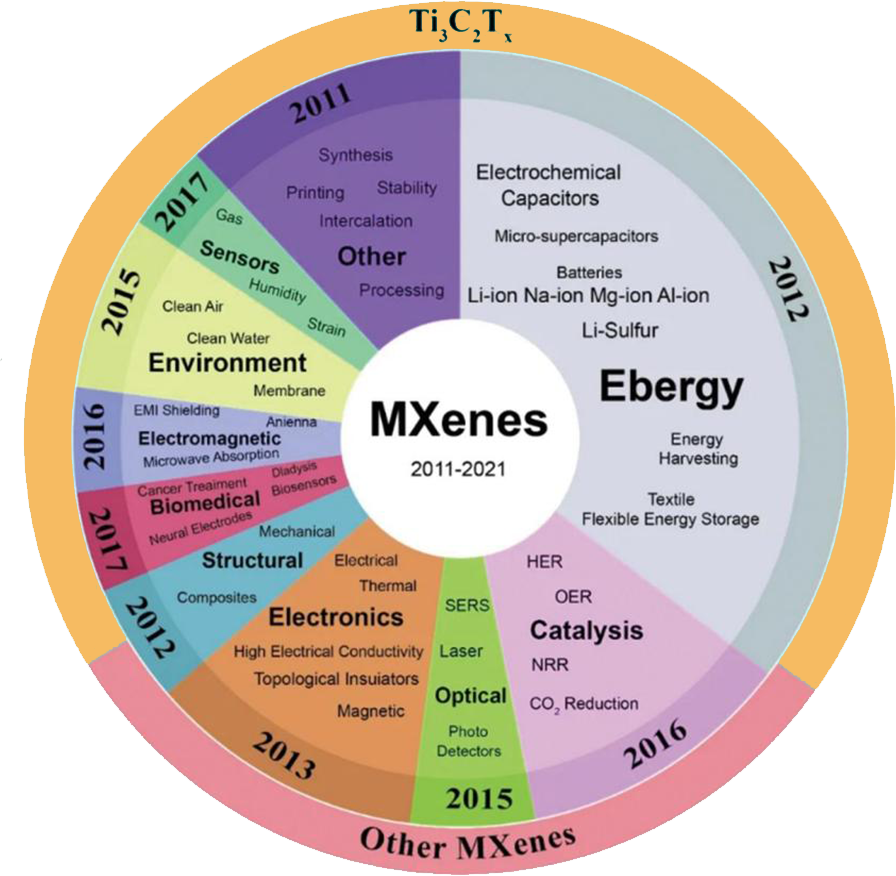

- Previous: ACS AMI: Two-step cons
- Next: IF 12.1! Wide-range tu


 mxene academic
mxene academic